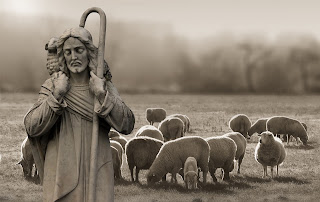sunflowers

All the lovely rain that came our way and cooled things off also took down our sunflowers once and for all. After staking them up a few times after storms, this time we decided they had matured enough to "harvest."
We learned from Wikipedia that, "What is usually called the flower is actually a head (formally composite flower) of numerous florets (small flowers) crowded together. The outer florets are the sterile ray florets and can be yellow, maroon, orange, or other colors. The florets inside the circular head are called disc florets, which mature into what are traditionally called "sunflower seeds," but are actually the fruit (an achene) of the plant. The inedible husk is the wall of the fruit and the true seed lies within the kernel."

We planted about 10 sunflower seeds, five grew, three grew tall enough and survived long enough to produce fruit. We got three good size heads that my kids have enjoyed nibbling away at this afternoon.
 Technically you should wait until they turn black, dry, and harden, but my kids have already dug into this giant head (see the white spot where the seeds are already gone?) They taste good enough to us!
Technically you should wait until they turn black, dry, and harden, but my kids have already dug into this giant head (see the white spot where the seeds are already gone?) They taste good enough to us!
My kids were also fascinated by the "foam" on the inside of the stalk. We cut off the head and behind it was a spongy material that led back into the main stalk. Fascinating stuff. And, a lot cleaner than dissecting frogs, which I know we will get to eventually . . .
One more tidbit about sunflowers which we learned from my mom last week, and Wikipedia brought up in their article as well . . . This flower also teaches a math lesson. The seeds follow a pattern as the "spirals are successive Fibonacci numbers." Although we had a difficult time finding this in our plants, we did learn something new.
Fibonacci numbers grow astronomically by adding together the two previous numbers. First, you have nothing, the first row has one, the next row has zero plus one (2), the next row has one plus two (3), then two plus three (5), and so on.
Like this:
0+1=1
1+1=2
2+1=3
3+2=5
5+3=8
8+5=13
13+8=21
21+13=34
34+21=55 . . .
An interesting mathematical pattern right there in nature. Almost like someone designed this or something. :-)
More websites about sunflowers:
The National Sunflower Association
Growing sunflowers (including pistures of different varieties)
Basic Harvesting and use of sunflower seeds
Collection of van Gogh's sunflower series
This is another thing I love about learning and homeschooling. What starts innocently enough as an impulse buy while shopping for vegetable seeds (for ten cents a pack we sure got our money's worth here), grows into a horticulture lesson, science, art, math, and of course Bible as we again recognize the amazing detail and orderliness of our God's created world.
The National Sunflower Association
Growing sunflowers (including pistures of different varieties)
Basic Harvesting and use of sunflower seeds
Collection of van Gogh's sunflower series
This is another thing I love about learning and homeschooling. What starts innocently enough as an impulse buy while shopping for vegetable seeds (for ten cents a pack we sure got our money's worth here), grows into a horticulture lesson, science, art, math, and of course Bible as we again recognize the amazing detail and orderliness of our God's created world.


Comments